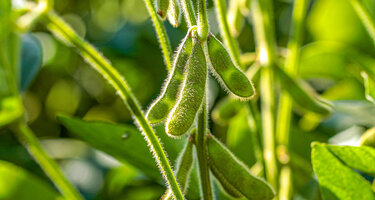Soy
Over 80% of the world's soybean production of 366 million tons (2020/21) is produced in the USA, Brazil and Argentina. In the EU, only 2.8 million tons of soy (soybeans, soybean meal and soybean oil) were produced in 2020/21, with imports of just under 32 million tons. As a legume, soy beans are well suited for cultivation in a crop rotation with other crops due to their ability to fix nitrogen and thus reduce the need for mineral nitrogen fertiliser.
Nevertheless, commercial cultivation is mainly carried out in large-scale monocultures with the corresponding use of mineral fertilisers and pesticides. The use of genetically modified seeds to maximise yields is also a common practice in global soy cultivation.
Especially in Latin America, tropical rainforests and dry forests of the Cerrado and Gran Chaco are being cleared to gain new cultivation areas. This often leads to the displacement of traditional land users. From 1990 to 2008 alone, soy cultivation contributed to a deforestation of 13 million hectares. Soy was responsible for almost one third of the EU's imported deforestation in the period 2005-2017. In the main producing countries, soybeans are grown in large-scale monocultures with significant use of herbicides, pesticides and mineral fertilisers. The reason for the increase in production is, among other things, the increase of meat consumption with rising prosperity, because the protein-rich soybean meal is mainly used as feed for chickens, pigs and cattle. In the form of tofu, soy milk or soy sauce, we humans consume only about 6 per cent of the soy beans worldwide.
